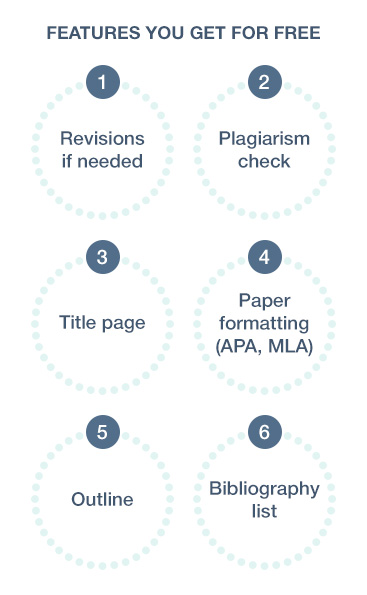“A Mongol Governor” by Patricia Ebrey
The selection under analysis is “A Mongol Governor” under the topic “history writing and historical genre.” It was prepared by Patricia Ebrey and its 2nd edition was released in 2009. It is an epitaph that was written on the grave of Menggu, the governor of Mongol, and was meant to give praise to the dead governor. According to the epigraph, the position of the Mongol governor was very significant in the history of China. Rising from mere nomads, the Mongols managed to conquer some parts of China by 1211 (Ebrey 192). The Mongol governor was, therefore, a position given to one of the great Mongol leaders who bore the title “Menggu.”
Get a Free Price Quote
The governor was highly reputable and very incorruptible. He was very righteous person who obeyed the law and justice. He was in the position to take control of all the magistrates within his locality because of his wisdom. The Mongol Governor leadership was admitted even by the emperor in China. His wisdom assisted in solving major feuds and calamities in China. If it were not for the epitaph to the Mongol governor, a great part of Chinese history could have been lost. The essay, therefore, seeks to provide a critical analysis of the epitaph to the Mongol governor with an aim of establishing its impact on the Chinese history.
Customer's review on Sitejabber
"I love spending time on this site cause the design is sooo lovely! The services I've ordered were also on top."
Emma H. reviewed Essaysworld.net on May 24, 2018 via SiteJabberClick to see the original review on an external website.?Learn more about our commitment to verified reviews.
Analysis about “A Mongol Governor”
It should be noted that there exists no written history about the Mongol governor or the Mongols except for various inscriptions and epitaph. The story of the Mongol governor was written as an epitaph. An epitaph is a piece of work usually written on the gravestones to commemorate a dead person and his or her work. The epitaph to the Mongol governor served as some kind of biography. Like other epitaphs, it was aimed at reminding about all the good deeds done by the governor (Ebrey 192). Sometimes epitaphs exaggerate the achievement of the dead person, thus making him or her seem a hero. The inscription serves as a tool of teaching the community about good governance. It is of great relevance today because it is the only piece of history about the Mongol governor that remained till nowadays. Its effect can therefore be felt as through the Mongol history can be read. It seeks to enumerate the growth of the Mongol empire between 1211 and the 1270s (Ebrey 192).
In China, the epitaph bore various significant roles in the Chinese society in various ages and in terms of addressing different issues of governance. First, the Mongols played a very critical role towards the civilization of Mongolia and China as a whole. They assisted in building a strong administrative structure. The Mongol governor, however, was the person at the center of the administrative excellence. He was referred to as the Menggu. At first, the Menggu was posted in Zhangde. The route needed someone who would provide effective leadership. The importance of the route saw Menggu promoted from the position of the legal officer to being a governor. The position was therefore granted to the Menggu as a reward from the Emperor, who had received authority from God to govern all regions in China (Ebrey 192). For several years, Menggu was in charge of all the prefects and magistrates as a governor but due to his efforts, incorruption and wisdom his authority extended to commanding the army. Menggu took over power as the governor of Zhangde when the military started oppressing the people after their victory. There was much to do with real leadership, justice and incorruptness in Menggu’s leadership as opposed to merely holding a position. The first task of Menggu was restoring peace in an already torn Zhangde route by instilling confidence and a sense of security among the people. The governor’s firm decision and authority to deal with any form of mistreatment regained the peoples trust in governance. The town came back to order; the farmers went back to farms, and the businessmen went on running their businesses (Ebrey 192).
8 Reasons to choose us:
- 01. Only original papers
- 02. Any difficulty level
- 03. 300 words per page
- 04. BA, MA, and Ph.D writers
- 05. Generous discounts
- 06. On-time delivery
- 07. Direct communication with an assigned writer
- 08. VIP services
The epitaph witnesses the big role played by Menggu in bringing peace to the area torn by violence. He always believed that only through peace can citizens acquire civilization. In 1238, for example, just the 2nd month after his appointment as a governor, Menggu received an order from the prefect of Huwaizhou, Wang Rong, to kill all individuals. The governor saw this as a sign of rebellion towards his regime. However, the governor was not quick at carrying out the order but took his time to comprehend and give a just verdict. Through the governor’s initiative, pardon was granted to those who were forced to join them. According to his statement, pardoning was the only prudent decision possible. As they had committed several atrocities, they were forced into the militia against their will and had to act under the forced instructions of another person. The prince at that time ruled in favor of the governor and the execution of Wang Rong eventually took place.
Whenever the epitaph is read, the unity of Mongolia is traced back to the governor of Mongol. He was believed to bring solution to the people even when everyone was hopeless and could find no solution to his or her problems (May 170). The leader was very compassionate in his treatment and worked to ensure that his subordinates do not die of hunger. Once, locusts attacked one of the areas under his leadership and destroyed all the sources of food. The people, however, were unwilling to move away. In the period between 1240 and 1243, the governor also came to the rescue of the people against the oppressive army (Stewart 150). Every time the army’s presence was seen in China, the people responded negatively to it and ran away in order to save their lives. The governor was, however, able to bring a sense of order to this situation. During 1217, when the cities within Huai and Han were fighting, a lot of people were displaced and others became refugees. There was no one they could ask for help (Ebrey 192). The Mongol governor decided to settle them as commoners in his land. Most of the refugees had already fled to far north and south. All these attempts were geared towards Mongolia and Chinese civilization.
The Menggu was a courageous leader who always fought for the unification of the Mongolian empire. Unity is deemed as one of the greatest achievements of the Mongol governor. When militias from Huizhou attacked his territory as a way of rebellion to his leadership, after a thorough evaluation of the situation, he said that the state had bestowed him with troops, and he could either pacify the bandits, or he would become a bandit himself. The governor, therefore, led his soldiers to fight the militias, which ended up in a very successful operation. The leader had vowed to accept responsibility if his attack was unsuccessful. The idea he strived for was peace and unity of the Mongolian empire.
The most unique feature of Menggu was his ability to apply the law is his quest for justice. His wisdom in handling cases was unmatched. His features made the general Chagan put him in charge of the department of investigation and review of cases of the death penalty. General Chagan had seen something in the Mongol governor that no other person possessed. That is a heart for humanity and being honest (Morgan 40). In around 1249, at the time when China was experiencing a lot of droughts, the governor also prayed a lot for rain, and it finally rained in about 1263. He was allowed to wear a golden tiger tablet as a reward for his dedicated service. This was a special prize given only to those people who had done a diligent service, like the governor of Mongol. Another reason for the award lies in his ability to resist corruption and build good reputation. The governor of the Mongols died at the age of seventy-one (Ebrey 193).
Indeed, the governor of Mongolia epitaph is a great one. Although it was never intended to be kept by people in classes or libraries for historical purposes, the impact it creates is enormous. The governor seemed a righteous person, a man with great humility, incorruptible and wise in all his decisions. His efforts to shape the administrative structure of the Mongolian empire and build a strong army cannot be overestimated. The modern China traces it organized governance structures from the Mongol Governors leadership. It is hard to find a person with such qualities today (Saunders 200). His impact on the Chinese Civilization is felt even nowadays. His efforts towards the unification of the Mongol empire are not in doubt.
Conclusion
In conclusion, the epitaph to the governor of Mongol is an inspiring piece of writing. A great part of the Chinese history would have been lost and the roots of the Chinese civilization could have been buried without it. Although the epitaph was only meant to rest at the gravestone of the Mongol governor, it has left an indisputable imprint and has a great historical value to the Chinese society.




 TOP 10 Writers
TOP 10 Writers


